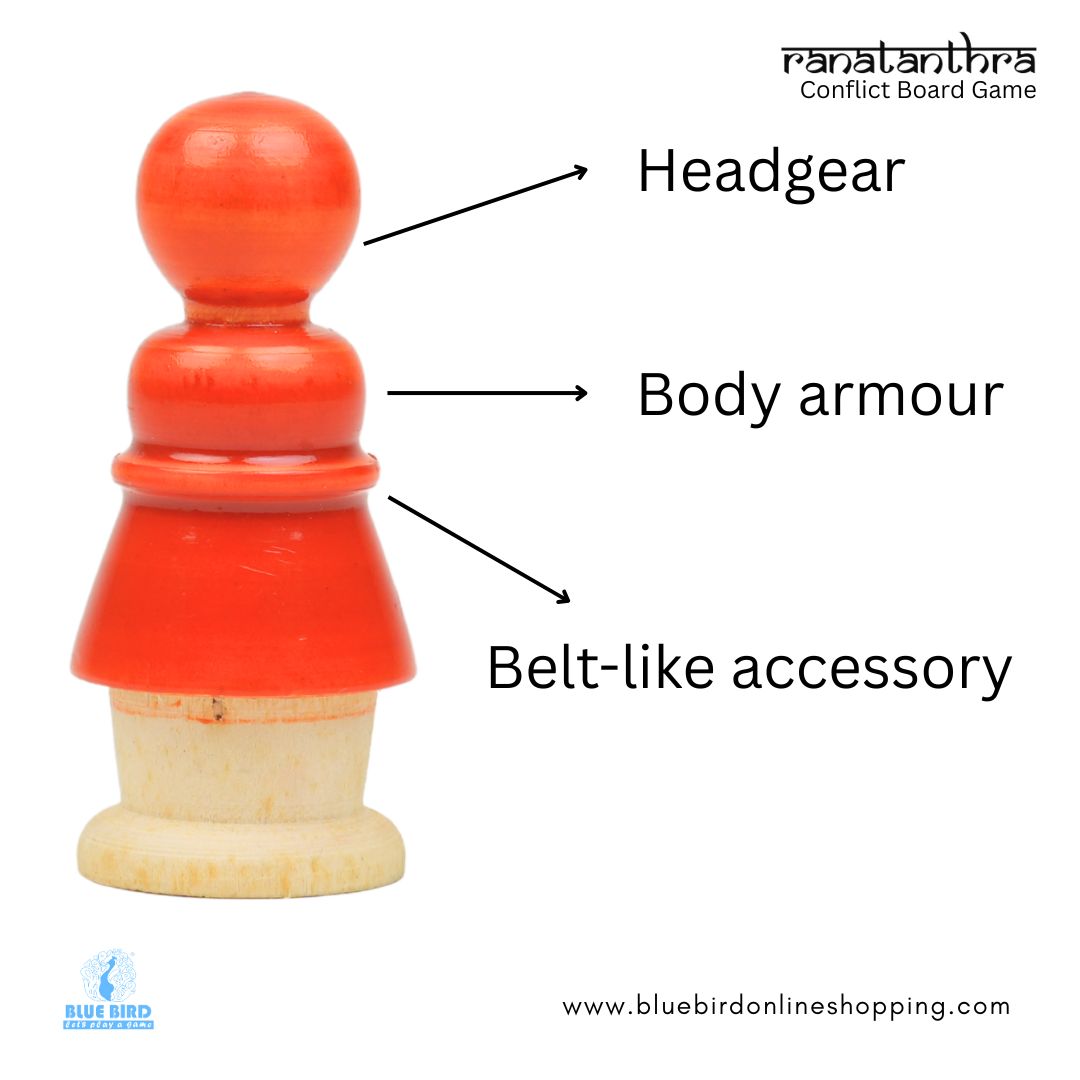
Designing the Warrior: The Story Behind the Soldier Pawns in Ranatanthra – Conflict Strategy Board Game
Share
When we first began developing Ranatanthra – Conflict Strategy Board Game, one of our earliest creative challenges was designing the soldier pawns. My co-creator Rashmi and I were deeply committed to making this game not just fun to play, but also rooted in Indian history and culture. We wanted the pawns to carry a strong sense of “Indianity” – something that felt authentic, yet fresh.
The Research Journey
To begin, we embarked on a fascinating case study focused entirely on ancient Indian soldier attire. Our goal was to understand how warriors dressed during times of war across different dynasties in India. We visited museums and studied books and historical texts that detailed armour, uniforms, and battlefield gear.
From the Chola dynasty in the south, known for its disciplined army and naval power, to the grand Vijayanagar Empire with its ornate ceremonial armour, and the adaptive military styles of the Mysore Kingdom, we traced a rich visual legacy of warrior aesthetics. These were studied alongside the practices of the Mauryan, Gupta, Rajput, and Maratha empires.
Key Elements We Discovered
Despite differences in geography and era, we found recurring elements in soldier attire:
- Headgear: Turbans and cloth wraps were widely used, serving both protective and symbolic purposes. These varied slightly between regions and ranks, with unique regional styles seen across dynasties such as the Cholas, Vijayanagar, and Mysore.
- Body Armor: Materials and styles varied by dynasty. Warriors of the Chola and Vijayanagar empires wore layered fabric or metal armour. Interestingly, Maratha soldiers often used thick leather armour, which provided a balance between mobility and protection—especially useful for their fast-moving cavalry tactics. In Mysore, armor included cloth-padded vests and occasionally chainmail or metal plates.
- Belts and Accessories: Soldiers wore belts and sashes that held weapons and other essentials. These accessories differed according to role and status—foot soldiers carried simpler gear, while officers wore more ornate and symbolic belts.
We also observed clear visual distinctions in attire according to military rank, which inspired us to subtly suggest these differences in our pawn designs.
From History to Handcraft
After gathering all these insights, we faced the task of translating these historical and cultural elements into a design that could be crafted from wood.
Since our pawns are made using lathe machines, the design needed to be simple, clean, and feasible for hand-turning. This meant capturing the essence of a historical Indian soldier—without overwhelming the artisan with excessive detail.
The Final Design
The final pawns are simple yet evocative. Each figure features a stylized turban-like headpiece, a defined torso symbolizing armour, and a belt-like detail around the waist. The overall form respects the limitations of woodturning while maintaining a culturally meaningful design.
Each pawn is hand-lacquered, giving it a smooth finish and lasting durability. See these beautifully crafted wooden warriors in action in our product: https://www.bluebirdonlineshopping.com/products/ranatanthra-conflict-board-game-for-age-5-years-above-board-games.
Celebrating Craft and Culture
At its core, Ranatanthra is not just a strategy game—it’s a celebration of Indian heritage, craftsmanship, and creativity. Designing the soldier pawns was a journey that took us deep into India’s martial history—from the leather-armoured Marathas to the ceremonial grandeur of Vijayanagar and the enduring legacy of the Cholas.
We hope Ranatanthra not only challenges your strategic thinking but also gives you a glimpse into the timeless spirit of India’s warriors—brought to life through every handcrafted pawn.
-Vijay Bharadwaj
Co-creator of the pawn